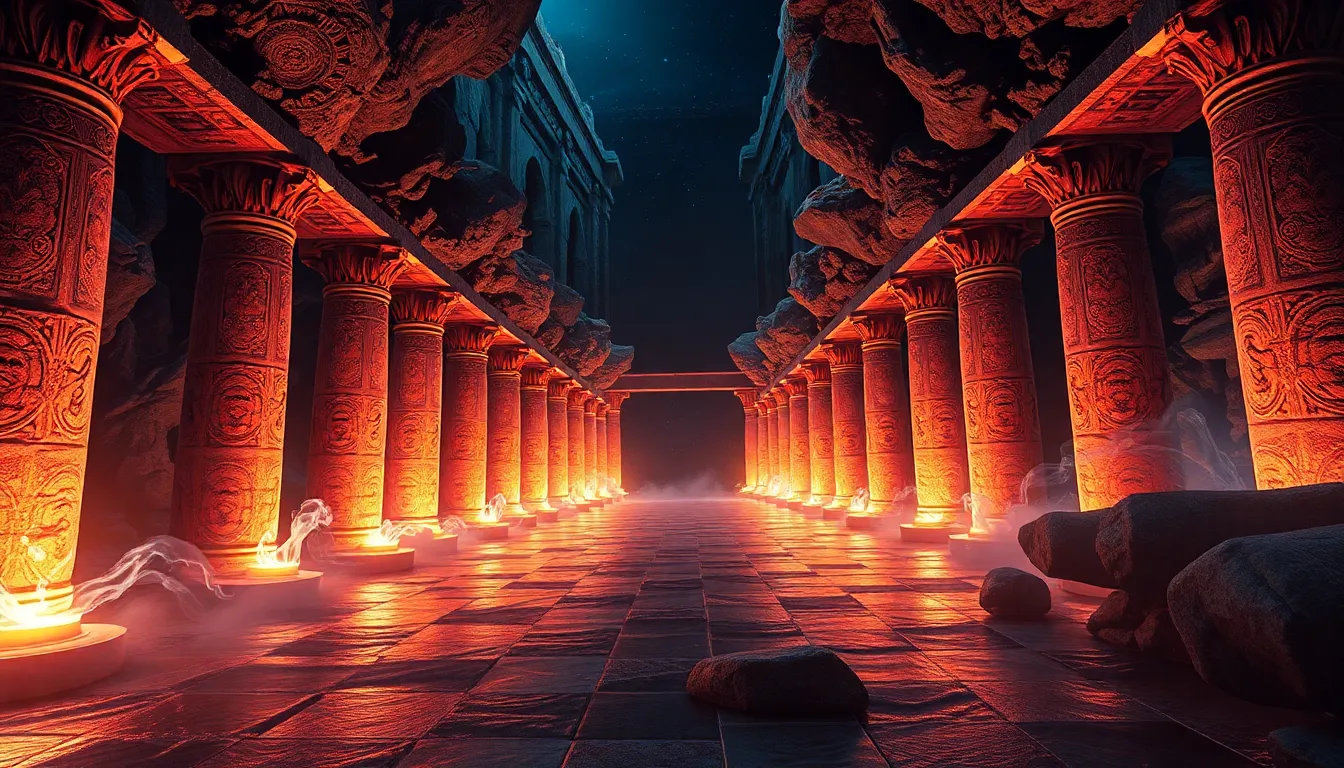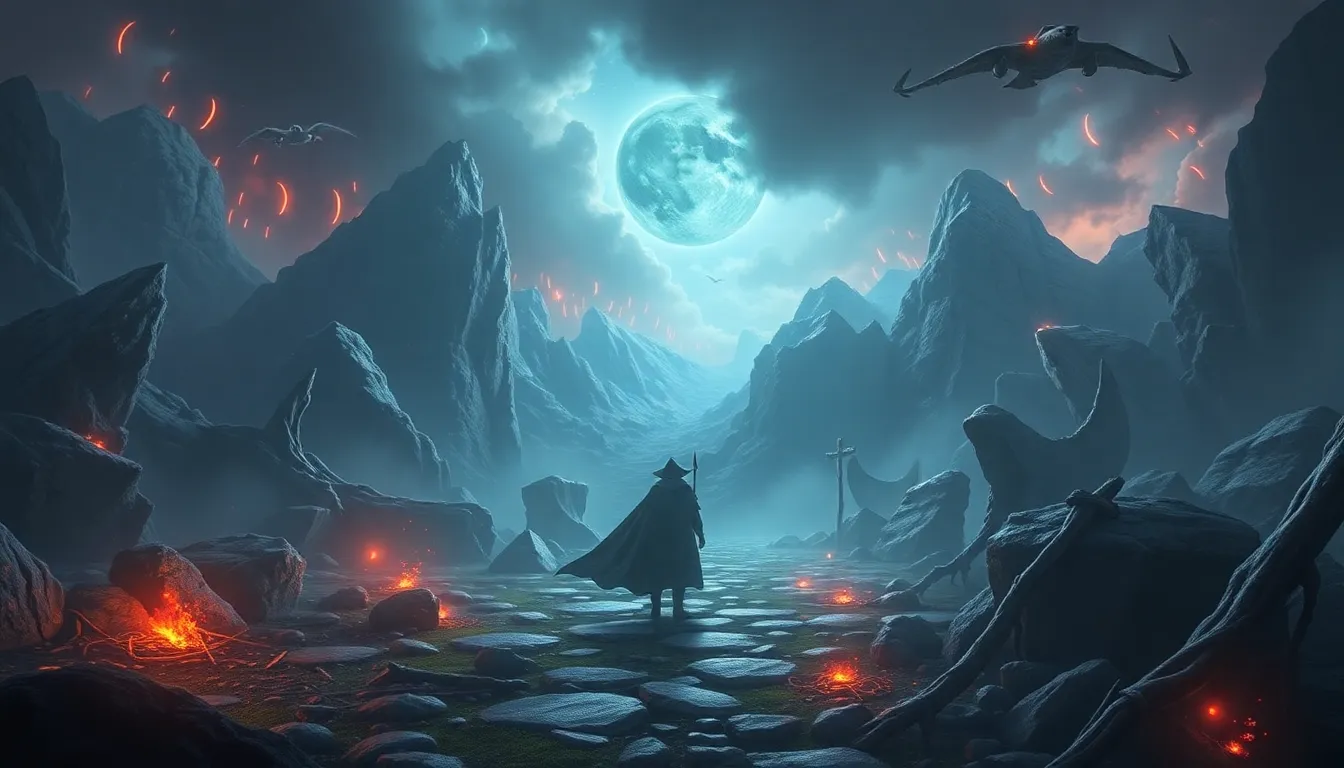Journey to the Underworld: Mythic Quests of the Afterlife
I. Introduction
The concept of the underworld holds a significant place in the mythology of various cultures, acting as a bridge between the living and the dead. It represents not just a location but a pivotal aspect of human existence that confronts the ultimate questions of mortality, morality, and the afterlife. In many traditions, the underworld is seen as a realm that the soul must navigate after death, filled with trials, challenges, and opportunities for transformation.
This article explores the mythic quests associated with these underworlds, delving into the journeys that heroes undertake to confront death, seek enlightenment, or retrieve lost loved ones. By examining various cultural perspectives and tales, we can gain a deeper understanding of humanity’s enduring fascination with the afterlife.
II. The Concept of the Underworld Across Cultures
Throughout history, the underworld has been depicted in many ways, reflecting the beliefs and values of different cultures.
A. Ancient Egyptian Duat
The Duat, or the realm of the dead in ancient Egyptian mythology, is a complex underworld where souls journey after death. The journey through the Duat involves navigating a series of challenges, including encounters with gods and monsters. The ultimate goal is to reach the Hall of Ma’at, where the heart of the deceased is weighed against the feather of truth.
B. Greek Hades
In Greek mythology, Hades is both the god of the dead and the name of the underworld itself. It is a place where souls dwell after death, divided into various regions, including the Elysian Fields for the virtuous and Tartarus for the wicked. The myths surrounding Hades emphasize themes of inevitability and the consequences of one’s life choices.
C. Mesopotamian Underworld
The Mesopotamian underworld, known as Kur, is depicted as a dark and dreary place, where the dead live a shadowy existence. Sumerian and Babylonian myths portray a bleak afterlife where the deceased are often forgotten and face eternal gloom, highlighting the stark contrasts with other cultural depictions of the afterlife.
D. Other Cultural Perspectives
- Nordic Hel: In Norse mythology, Hel is the realm where those who did not die a heroic or honorable death reside. It is ruled by the goddess Hel and is characterized by cold and mist.
- Hindu Naraka: In Hindu belief, Naraka is a temporary place of punishment for souls who have committed sins, from which they can eventually be reborn through reincarnation.
- Indigenous Beliefs: Many Indigenous cultures have their unique interpretations of the afterlife, often intertwining nature and ancestral spirits, emphasizing a continuous cycle of life and death.
III. Common Themes in Mythic Quests to the Underworld
Mythic quests to the underworld often share common themes, which resonate across various narratives.
A. Trials and Tribulations
Heroes embarking on journeys to the underworld face numerous challenges and obstacles that test their resolve and character. These trials often serve as metaphors for personal growth and transformation.
B. The Role of Guides and Figures
Many myths feature guides who assist the protagonist in navigating the underworld. Notable figures include:
- Charon: The ferryman of Hades, who transports souls across the river Styx.
- Anubis: The Egyptian god who guides souls and oversees the weighing of the heart.
- Virgil: In Dante’s “Divine Comedy,” he serves as a guide through the underworld.
C. Transformation and Enlightenment
Underworld journeys often result in significant transformation for the hero, providing insights into life, death, and the nature of existence itself. They emerge with a deeper understanding of their purpose and the interconnectedness of all beings.
IV. Famous Mythic Quests to the Underworld
Several well-known stories illustrate the concept of the underworld and the quests associated with it.
A. Orpheus and Eurydice
The tale of Orpheus, a gifted musician, and his beloved Eurydice is a poignant story of love and loss. Orpheus descends into the underworld to retrieve Eurydice, facing the challenge of not looking back until they reach the surface. His failure results in tragic consequences, symbolizing the irreversible nature of death.
B. Inanna’s Descent
Inanna, the Sumerian goddess of love and war, descends into the underworld to confront her sister, Ereshkigal. This journey represents themes of sacrifice and the cycle of life and death, as Inanna must shed her earthly adornments to pass through the seven gates of the underworld.
C. The Aeneid
Virgil’s “The Aeneid” features Aeneas’s journey to the underworld, where he encounters the souls of the dead and learns about his destiny. The underworld serves as a place of reflection on duty, fate, and the importance of the past.
D. The Epic of Gilgamesh
In the “Epic of Gilgamesh,” the hero’s quest for immortality leads him to the underworld. His encounters with the dead offer profound insights into the nature of life, death, and the acceptance of mortality.
V. Symbolism of the Underworld in Mythology
The underworld is rich in symbolism, often representing deeper philosophical ideas.
A. Death as a Transition
Many cultures view death not as an end but as a transition to a new state of being. Rebirth and renewal are common themes that underscore the cyclical nature of life.
B. The Underworld as a Reflection of Human Fears and Desires
The depiction of the underworld often mirrors human fears of death and the unknown, as well as desires for immortality and legacy. It serves as a canvas for exploring the dualities of existence.
C. Guardians and Thresholds
Figures such as Cerberus, the three-headed dog of Hades, symbolize the barriers between the living and the dead. These guardians represent the challenges one must face to traverse the boundaries of life and death.
VI. The Role of Mythic Heroes in Underworld Quests
Mythic heroes often embody the archetypal journey, facing trials that reflect broader human experiences.
A. Archetypal Hero’s Journey
Joseph Campbell’s concept of the hero’s journey illustrates how these quests often follow a similar structure, involving departure, initiation, and return.
B. Case Studies
Heroes like Gilgamesh, Orpheus, and Persephone serve as archetypes, each representing different aspects of the human experience regarding love, loss, and the quest for understanding.
C. The Impact of Personal Sacrifice
Many mythic narratives emphasize the theme of sacrifice, where heroes must give up something precious to achieve their goals and gain greater wisdom.
VII. The Influence of Underworld Myths on Modern Literature and Media
Underworld myths continue to influence contemporary storytelling, appearing in various forms of media.
A. Adaptations in Contemporary Storytelling
Films, books, and video games frequently draw on the rich tapestry of underworld myths. Examples include:
- Movies: “The Matrix” and “Coco” explore themes of the afterlife and personal growth.
- Books: Neil Gaiman’s “American Gods” incorporates mythic elements regarding life after death.
- Video Games: Titles like “Hades” allow players to navigate the Greek underworld, emphasizing the hero’s journey.
B. The Symbolism of the Underworld in Modern Narratives
Today, the underworld serves as a powerful symbol for confronting personal demons, navigating trauma, and understanding the complexities of life and death.
C. How These Myths Shape Our Understanding of Life and Death Today
These ancient myths continue to resonate, offering frameworks for exploring existential questions and fostering a deeper understanding of the human experience.
VIII. Psychological Interpretations of Underworld Myths
Psychological interpretations of underworld myths provide insight into the collective unconscious and human psyche.
Jungian analysis, for example, views the underworld as a representation of the shadow self, where individuals confront their fears and


